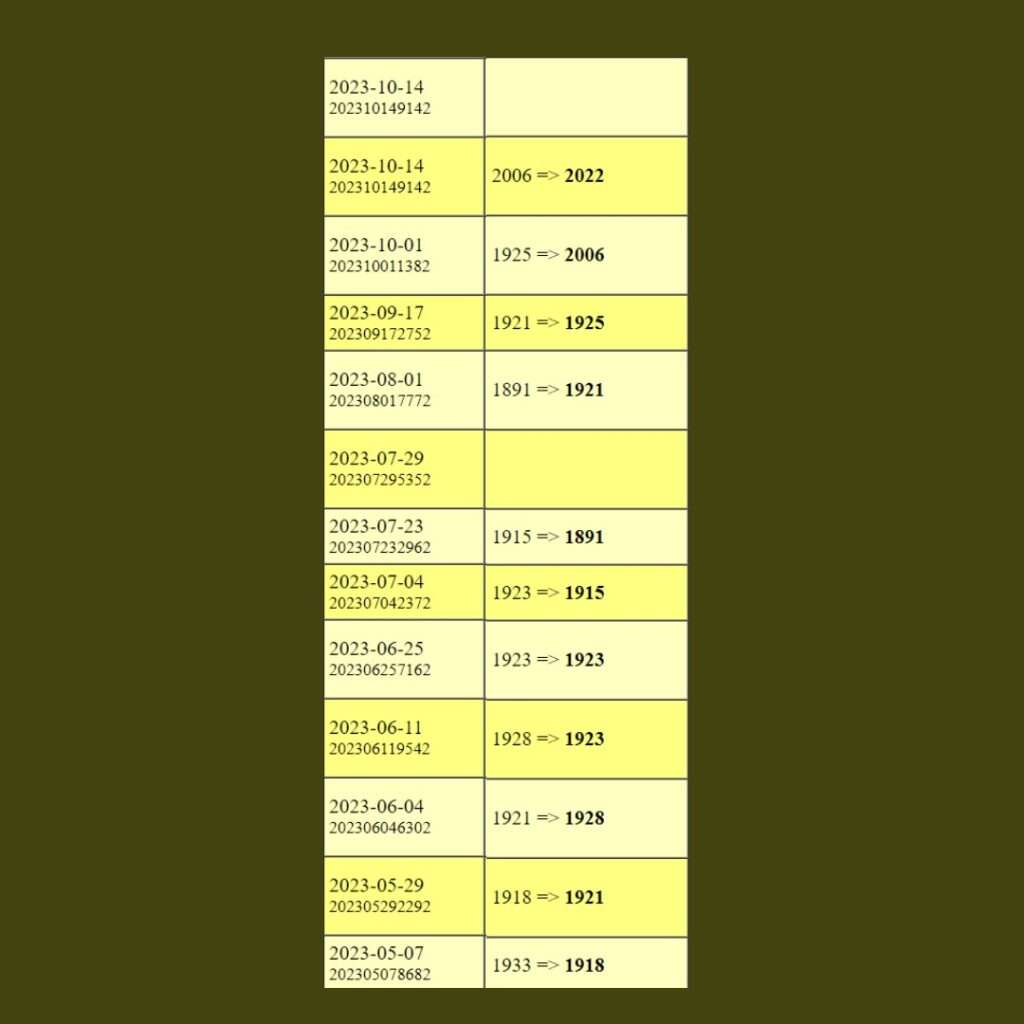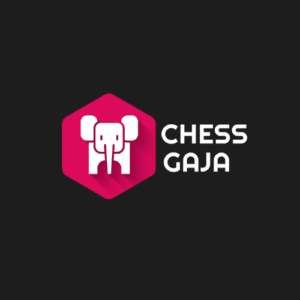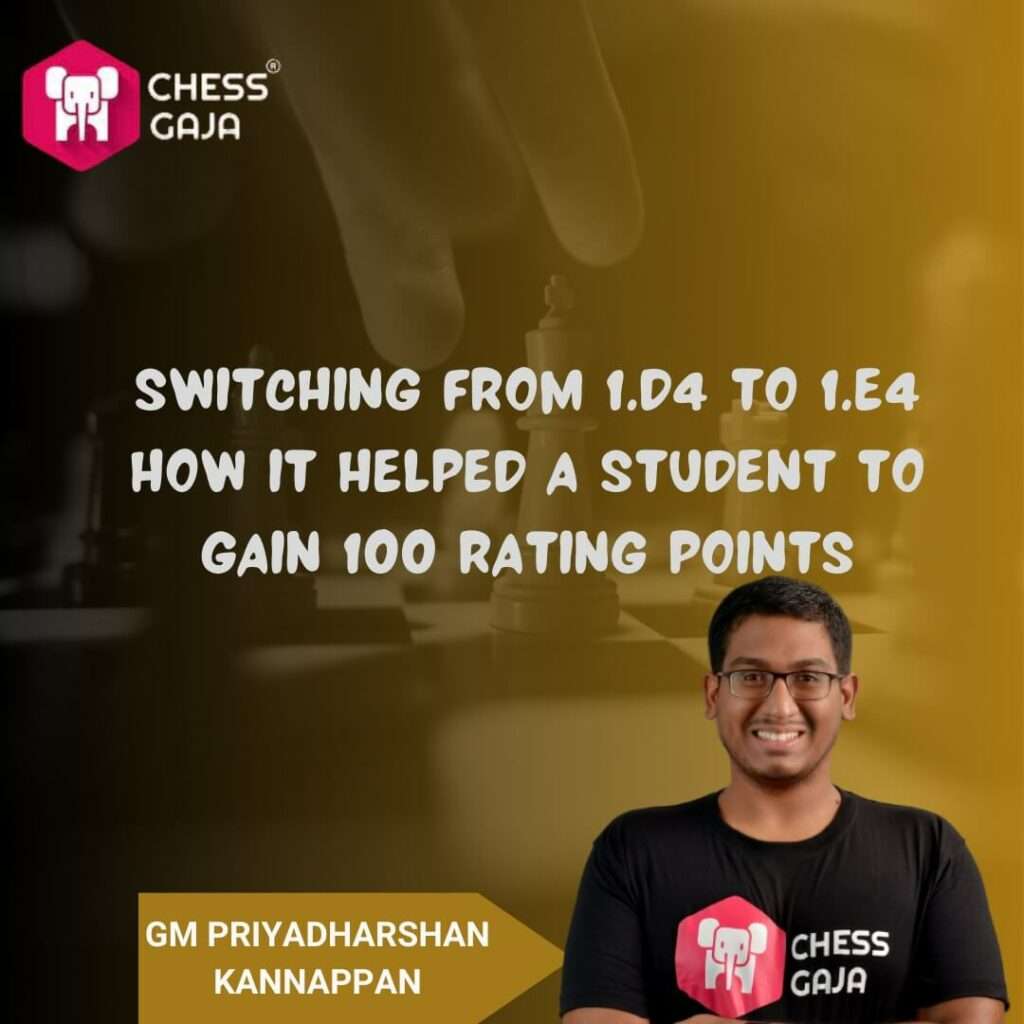Switching from 1.d4 to 1.e4
In May 2023, I had a discussion with one of my young students who had been stuck at the 1900 rating level for a few months. We discussed what steps he could take to surpass the 2000 rating and analyzed various ideas. These included improving his middle game, gaining a better understanding of his 1.d4 Opening lines, working on endgame positions that arise from his opening games, and considering a switch from 1.d4 to 1.e4 as White.
Read this blog to find out how a 1918 USCF-rated student in May 2023 is now rated 2022 in October 2023.
The backstory of this 1.d4 to 1.e4 student
The student couldn’t score points because his opponents now were 2000+ rated players who knew how to handle the opening pressure in Catalan positions and were well-prepared.
We spent a few months in early 2023, trying to improve his understanding of 1.d4 and the resulting middle game positions, but it didn’t work as we hoped.
So we considered the idea of switching to 1.e4 and the student and the parent were receptive to my suggestion of switching the opening.
The receptiveness is an important step as many players and parents get too worried or stressed about making a big change from 1.d4 to 1.e4 or vice versa.
Time to switch the opening
Once the student was mentally prepared to switch openings, we created a list of main lines for him to choose from. I showed him multiple choices for each important line and allowed him to browse through model games to find positions that matched his playing style.
I only suggested main lines and avoided sideline options. For example, against the Sicilian Defense, I only suggested variations where White plays 3. d4. I did not suggest sideline options such as the Closed Sicilian or the Grand Prix Attack.
When making a big switch in openings, it’s worth the extra effort to learn and memorize the main lines. This is because the main lines are the most critical in terms of opening complexity and posing challenges to the opponent.
The Model Chess Game logic
To learn about any new opening, the first step is to study model games played by notable experts in that opening. This will give you a feel for the middle and endgame positions that typically arise.
One common question is how many model games you should study. I recommend a minimum of 100 games, but there is no maximum limit. The more games you study, the better your understanding of the opening will be.
When studying model games, it is important to pay attention to the pawn structure, piece exchanges, and endgames. You may also want to take notes in a notebook to help you remember the key patterns.
If possible, try to find model games that are annotated. The annotations will give you more insight into the expert’s thinking and help you understand the patterns in the opening better.
Here is a tip for studying model games:
Play through the game quickly on your computer multiple times.
Try to identify the key patterns in terms of pawn structure, piece exchanges, and endgames.
Take notes in a notebook to help you remember the key patterns.
If possible, find annotated model games. The annotations will give you more insights into the expert’s thinking and help you understand the patterns in the opening better.
The phase after looking through the Model Games
Once the students had familiarized themselves with the model games in the suggested lines, we began working on in-depth preparation.
I am a firm believer in the Pareto Principle, also known as the 80/20 rule. This principle applies to opening preparation as well. To be well-prepared, it’s important to focus on the main lines, such as the Sicilian, French, and Caro-Kann Defenses, which you’ll come across in about 80% of games
Conversely, you will only face sideline openings, such as the Pirc, Modern, Alekhine, and Owen’s Defenses, about 20% of the time once you cross the 1900 rating level. Therefore, it is more important to focus on lines that you are more likely to face rather than on random sidelines that you will only face occasionally.
So how did this help the player get better and improve their rating?
The switch to the new opening was not initially smooth. I assigned an International Master from my team to help the student understand the opening positions because he was not getting the ideas at first.
Learning the new opening lines broadened the student’s general chess knowledge. This helped them to gain confidence in their game, which was reflected in the many points they picked up thanks to their new opening preparation.
The preparation was not just about learning new lines. It also helped the students to understand a new set of middle-game positions that they were not previously familiar with. This exposure to new positions broadened their chess understanding, which led to a 100-point increase in their rating.

Will I gain 100 points if I switch my opening?
Switching openings alone will not help you gain rating points. In fact, it could make you lose rating points if you don’t do it correctly.
Opening switches is also time-consuming, as it takes at least three months to develop a good understanding of a new opening line. You might experience confusion and uncertainty. You could question if you’re spending too much time on the new openings instead of sticking to the ones you already know and feel comfortable with.
My suggestion is that you should not consider switching openings if you are rated below 1800. If you are rated above 1800, switching openings is a possibility, but it should not be your first choice if you have plateaued in your chess improvement.
Instead, focus on improving your middle-game and end-game skills. If that doesn’t produce any visible results, then you can consider switching openings.
Final Thoughts on Switching Openings
Follow the right process when switching openings:
1)Make a preliminary list of openings you want to learn.
2)Choose two or three variations for each opening.
3)Study model games in all of those variations to find one that you feel comfortable with.
4)Once you’ve chosen a system, study the main lines in depth.
5)Pay little attention to the sidelines.
6)Test out your new opening in tournament games as you learn it.
If you prepare the right way, you won’t just learn a new opening. This will help you understand pawn structures, middle-game positions, and endgame positions in chess.
Subscribe to the Chess Gaja newsletter for more chess improvement tips and ideas.
If you found this article useful, please share it with your friends and family. Let us know what other chess topics you’d like me to cover in future blog posts.
Regards
GrandMaster and FIDE Trainer Priyadharshan Kannappan











